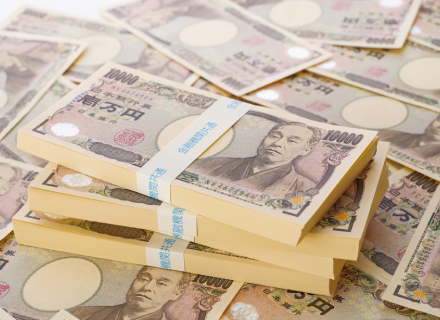The Japanese yen reached a six-week high, igniting speculation about an official push, while the dollar saw widespread losses as markets got ready for the United States to cut rates in a few months.
The euro was steady at USD 1.3007, not far from the one-year high it had made in overnight trade, while the sterling was close to the four-month peak it had reached overnight.
The yen made significant gains and continued to rise by 0.5% to reach 155 points per dollar. Data from the Bank of Japan’s money market indicated that authorities might have purchased almost 6 trillion yen.
Dealers noted that these actions had the appearance of additional intervention, or at the very least, of markets being alarmed by the possibility.
“Many traders and Japanese investors, after the intervention, were looking to reload on their trades. The big move would have caught them offside and triggered a little bit of a reassessment if not an unwinding of those positions. Net yen shorts stood near a 17-year high last week,” National Australia Bank strategist Rodrigo Catril in Sydney said.
The large interest rate differential that had enticed investors to take on sizable short positions in the yen is closing as interest rate markets price in more than 60 basis points of United States interest rate cuts in 2024 and about 20 basis points of hikes in Japan.
Catril and other analysts also noted that statements made by United States presidential candidate Donald Trump, who in an interview with Bloomberg Businessweek described the strength of the dollar and the weakness of the yen and yuan as a big problem, were causing trepidation in the markets.
The yen has lost over 9% versus the dollar so far this year, making it the worst-performing G10 currency, while the yuan has lost about 2.2 %. Recently, the yuan was trading at 7.2667 per dollar, which is about its 50-day moving average.
Meanwhile, Japan’s core inflation accelerated for a second straight month in June 2024, extending a more than two-year run above the central bank’s 2% target and keeping alive market expectations of a near-term interest rate hike.
However, more than three-quarters of economists polled by Reuters expected the Bank of Japan (BOJ) to hold off on raising rates this month as soft consumption weighs on a fragile economy.
“Demand-driven inflationary pressure remains weak. Price rises caused by higher import costs are reducing real wages and dampening consumption. There’s no change to our view that any rate hike won’t come until October at the earliest,” said Takeshi Minami, chief economist at Norinchukin Research Institute.
The core consumer price index (CPI), which strips away the effect of volatile fresh food prices, rose 2.6% in June from 2023, slightly below market forecasts for a 2.7% gain. It followed a 2.5% gain in May and exceeded the BOJ’s target for the 27th straight month, due partly to a 7.7% jump in energy costs reflecting a reduction in utility subsidies.
“A separate index that excludes the effects of fresh food and fuel costs, closely watched by the BOJ as a broader price trend indicator, rose 2.2% in June after a 2.1% reading in May. The data will be among the factors the BOJ will scrutinise at its policy meeting on July 30-31, when the board will release fresh quarterly forecasts and debate whether to raise rates from current near-zero levels,” reported Reuters.
At the policy meeting, the BOJ will likely project inflation to stay around its 2% target in the coming years, signalling its readiness to push up borrowing costs.
The BOJ exited negative rates and bond yield control in March 2024, a landmark shift away from a decade-long radical stimulus programme. Governor Kazuo Ueda has dropped hints the central bank will push up rates further if rising wages and services prices heighten prospects for durably achieving its 2% inflation target.
Some analysts feel that conditions for a rate hike are already falling into place. The latest data showing service inflation perking up to 1.7% in June from 1.6% in May indicates the sign of companies continuing to pass on rising labour costs through price hikes.
“Looking ahead, we expect underlying inflation to remain around 2% until early 2025, which we think will prompt the Bank of Japan to hike rates both this month and in October,” said Marcel Thieliant, head of Asia-Pacific at Capital Economics.
A weak yen complicates the BOJ’s policy path. While it pushes import prices and broader inflation, the currency’s fall has hurt households by making food and fuel more expensive. Some members of a top economic council have warned that the government should not overlook the pain a weak yen and rising prices were inflicting on households.
“There are limits to how much companies can hike prices if consumers can’t keep up. The key is whether wage hikes and tax cuts would help lift currently weak consumption,” said Yoshiki Shinke, chief economist at Dai-ichi Life Research Institute.


